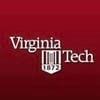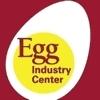Explore all the information on
Poultry egg quality
Egg quality defines those characteristics of an egg that affect consumer acceptability and preference. Components of quality include shell quality and interior egg quality for shell eggs, and interior egg quality for further processed eggs. The quality of the egg once it is laid cannot be improved. Hence, its maintenance is mostly a preventive process. Egg quality is influenced by several factors including rearing, temperature, humidity, handling, storage, and egg age. Shell quality: There are five major classes of shell defects: integrity, texture, shape, color, and cleanliness. Internal egg quality involves functional, aesthetic and microbiological properties of the egg yolk and albumen. The proportions of components for fresh egg are 32% yolk, 58% albumen and 10% shell. Regarding exterior egg quality, the shell of each egg should be smooth, clean and free of cracks. The eggs should be uniform in colour, size and shape.
1 INTRODUCTION During the last decades, the productivity of laying hens has improved significantly, with higher number of eggs produced over the laying cycle and higher efficiency to utilize feed nutrients. This increase in productivity implies in a change in the requirements, and consequently, these hens become more demanding in nutrients, mainly amino acids (Elliot, 2008). Optimization of protein supply by understanding the amino acid needs of these hens requires a thorough...
Comments : 1
Recommendations: 1
The 2023 Latin American Poultry Summit will kick off with a session on market management, presented by two renowned poultry industry experts and followed by a panel discussion. Sponsored by the International Poultry Expo (IPE), part of the International Production & Processing Expo (IPPE), and the Latin American Poultry Association (ALA), the Latin American Poultry Summit is organized into four tracks to provide in-depth information in each area.
Paulo de León, director of...
Comments : 0
Recommendations: 0
INTRODUCTION The production performance of laying hens during their late laying period is rapidly decreasing. This late period represents nearly 50% of the whole laying period, and laying hens are generally eliminated at about 500 days of age. However, laying hens still maintain a laying rate of 60-70% at this time; therefore, the production performance of flocks during this late laying period directly affects the economic benefits of farmers. Therefore, prolonging the...
Comments : 0
Recommendations: 0
...
Comments : 0
Recommendations: 0


An impact of Deoxynivalenol produced by Fusarium graminearum on broiler chickens
Suggested link
Mike Persia (Virginia Tech University) discusses the effects of high concentrations of this vitamin on skeleton health and eggshell quality, during IPPE 2018 in Atlanta, USA....
Comments : 2
Recommendations: 3
I. INTRODUCTION Optimum BW is an important consideration in achieving early maturity, high productivity and uniformity in laying hens (Lacin et al., 2009). Parkinson et al. (2015) noted that it was common for Australian flocks to have an average body weight (BW) 100-300 grams above the breed standard weight (BSW). This higher BW is indicative of bird obesity and is associated with the production of excessively large eggs with consequently lower eggshell quality and...
Comments : 0
Recommendations: 0
Introduction Conventional systems (battery cages) lead commercial egg production worldwide due to their reportedly efficient disease prevention processes (WHILEY; ROSS, 2015). However, shifts in egg consumption have drawn attention to potential animal welfare issues and generated demand for alternative laying systems with improved hen wellbeing. In this way, free-range systems could be an ideal choice for egg production and hen welfare (JONES at al., 2012); however, despite...
Comments : 0
Recommendations: 0
I. INTRODUCTION True sustainability was defined by the World Commission on Environment and Development (Brundtland Commission, 1987) as “the ability to meet the needs of the present without compromising the ability of future generations to meet their own needs”. Sustainability is a concept with multiple facets including, environmental (which includes both the demand for resources and environmental pollution), ethical (welfare and social conscience), economic and...
Comments : 0
Recommendations: 1
I. INTRODUCTION The current system of feeding laying hens with a fully mixed diet, that attempts to meet all the nutrient requirements of the birds, only really developed with the introduction of cage housing facilities after the Second World War. Research on confining laying hens to cages ramped up in the first half of the 20th Century in California but it was not until the late 1940s that the first commercial cage farms started to appear (American Egg Board, 2020). Nutrition...
Comments : 0
Recommendations: 1
Digitize is one of the current “buzzwords” in the animal production industry. But, as with other such terms, it can mean different things to different people. “Digitize” is defined as: “to change something such as a document to a digital form (a form that can be stored and read by computers)” – Cambridge Dictionary Merely making records available in a form that can be accessed via a computer is not enough. What we really need is to...
Comments : 0
Recommendations: 4
Evonik has launched a digital access to EGGcellence . AMINOHen® is an egg industry nutrition software developed by Evonik to achieve Sustainable egg production and easily individualized a feeding program for layers.
...
Comments : 0
Recommendations: 3
I. INTRODUCTION The transition in the layer industry from conventional cages to cage-free and even further into free-range production is rewriting the nutritional requirements of the laying hen. In the last 25 years, the number of eggs a hen can produce has increased by about 2 eggs each year while the amount of feed required to produce these eggs has been reduced by 18.6% in cages (Anderson, 1991; Anderson et al., 2013, Anderson, 2019). The result has been a high value...
Comments : 0
Recommendations: 0
Introduction Several factors can influence animal production, which can be beneficial or harmful to each species. In addition to the ambience, nutrition and sanity, the genetic characteristics of the breeds/lineages also cause changes in the adaptation and performance of the animals (Azevedo, Fosse Filho, Pereira, Andrade, & Júnior, 2016). In the current market there are three genetic groups of poultry according to their ability to produce: heavy poultry, light laying...
Comments : 0
Recommendations: 0
INTRODUCTION Major health problems of the poultry industry have certain effects on egg production. Especially, infectious diseases which may drop in egg production and egg quality by affecting the reproductive system directly and the health status of poultry indirectly (Clauer, 2009). Gallibacterium anatis (G. anatis) has been known to be a part of the normal microflora of the lower genital and upper respiratory tract (Bojesen et al., 2004; Jones et al., 2013; Lawal et...
Comments : 0
Recommendations: 1
INTRODUCTION Substantial consumer pressure demonstrates that some practices adopted by the poultry industry should be revised as soon as possible, particularly those related to the management of debeaking methods. Pecking committed by dominant bird causes prolonged stress, decreased feed intake and worsening feed conversion, and may even affect internal and external egg quality (Vieira Filho, et al., 2016). Also, whole beak pullets waste and select feed grains, compromising...
Comments : 0
Recommendations: 0
Introduction Selection significantly improves production traits in Japanese quail. Proper selection and breeding techniques coupled with improvements in the environmental and managerial conditions can help improving overall egg production (Chahil et al., 1975). Significantly higher egg production was observed in selected lines of Japanese quail as compared to control groups (Aboul-Hassan, 2001a). However, it is a well-known fact that selection for higher body weight is...
Comments : 2
Recommendations: 0
I. INTRODUCTION The importance of the microbiota and general gut health, in relation to animal health and thus performance, cannot be underestimated. This has led to the development of management tools to influence and support the gut microbiota, as well as gut health in general. Probiotics, defined by the FAO/WHO (2002) as “live microorganisms which when administered in adequate amounts confer a health benefit on the host”, are a good example thereof. Specifically...
Comments : 0
Recommendations: 0
Introduction Globally, the poultry sector is a sizeable industry with a current market value of $ 310.7 billion and is expected to grow at a compound annual growth rate (CAGR) of 3.8% 1 . Poultry is a rapidly growing agricultural sub-sector in developing countries 2 , however, product quality, safety, and avian diseases continue to be a major challenge to this industry 3 . Hatcheries occupy a focal position in the poultry production chain,...
Comments : 0
Recommendations: 0
This year’s World Egg Day theme ‘Eggs for a better life’ celebrates the incredible egg’s power to support not just human health outcomes, but planetary health and people’s livelihoods too!
The egg is a brilliantly versatile protein powerhouse, containing 13 different essential nutrients in one...
Comments : 0
Recommendations: 0
I. INTRODUCTION Most Australian households consume large numbers of eggs on an annual basis, but we know very little about what members of the broader community think about the practices associated with commercial egg production and the underlying values that they bring to these considerations. A previous study for Australian Eggs (Fisher et al., 2019) examined the values-based elements underlying the consensus in animal science across key areas related to laying hen...
Comments : 0
Recommendations: 0

.jpg&w=3840&q=75)




.jpg&w=3840&q=75)



.jpg&w=3840&q=75)



.jpg&w=3840&q=75)


















